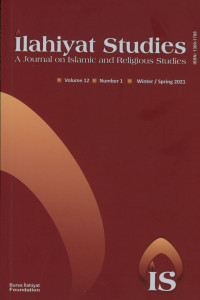Encounters with the Hidden Imam in Early and Pre-Modern Twelver Shīʿī Islam by Omid Ghaemmaghami, Leiden/Boston: Brill 2020, 276. €130.00
Encounters with the Hidden Imam in Early and Pre-Modern Twelver Shīʿī Islam by Omid Ghaemmaghami, Leiden/Boston: Brill 2020, 276. €130.00
First Paragraph: Encounters with the Hidden Imam in Early and Pre-Modern Twelver Shīʿī Islam by Omid Ghaemmaghami is aimed to analyze the accounts addressing the possibility of seeing, recognizing, or coming into contact with the Hidden Imam during the ghaybah [occultation]. The central belief of the Imāmī Shīʿīs is that the son of Ḥasan al-ʿAskarī, the twelfth and final Imam disappeared in 260/874 and has since been shrouded in concealment. This process of ghaybah includes the two periods of Minor Occultation (al-ghaybah al-ṣughrá) and Major Occultation (al-ghaybah al-kubrá). Imāmī traditional data reveal it to be possible for the Hidden Imam to be seen, recognized, or encountered during the first occultation period beginning with the death of the eleventh imām, Ḥasan al-ʿAskarī, and concluding with the death of Alī ibn Muḥammad al-Samurī (d. 329/941), the fourth and the final emissary (safīr) of the Hidden Imām. When the early and premodern Imāmī literature is thoroughly examined, the question of contact with the Hidden Imām during the second ghaybah yet appears to be puzzling. In this book, Ghaemmaghami emphasizes the absence of narratives in the early Shīʿī authoritative texts that would have evidenced one’s communication with the Hidden Imām during the Major Occultation.
Keywords:
ghaybah, Hidden Imām, Imāmī Shīʿīs Shīʿiah,
- ISSN: 1309-1786
- Başlangıç: 2010
- Yayıncı: Bursa İlahiyat Vakfı
Sayıdaki Diğer Makaleler
Islamic Classical Theism and the Prospect of Strong Artificial Intelligence
Meryem ŞAHİN, Mücahit GÜLTEKİN
A Criticism of Transhumanism from the Society 5.0 Perspective in the Context of Social Values
Abdulkadir BÜYÜKBİNGÖL, Taylan MARAL
The New Materialism and Post-Humanist Studies
Critique of Transhumanism's Concept of Humans from the Perspective of Islamic Thought
